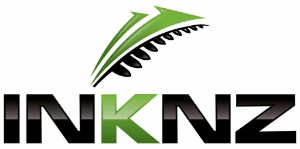In the world of printing, the quest for high-quality yet affordable ink solutions has led to the rise of alternative options beyond original manufacturer inks. Two prominent choices that have gained popularity are remanufactured inks and compatible inks. These alternatives offer cost-effective ways to keep your printers running without compromising on print quality. But what exactly are the differences between remanufactured and compatible inks? In this post, we’ll delve into the nuances of each type to help you make an informed decision for your printing needs.
Remanufactured Inks: Sustainable Printing Solutions
Remanufactured inks, often referred to as “remanufactured cartridges,” are original printer cartridges that have been collected, cleaned, refurbished, and refilled with ink. These cartridges are then rigorously tested to ensure they meet or even exceed the performance standards of the original manufacturer’s cartridges. Key features of remanufactured inks include:
Environmental Sustainability: Remanufactured inks contribute to reducing electronic waste by recycling existing cartridges. This eco-friendly approach aligns with the principles of sustainability and minimizes the need for new cartridge production.
Quality Control: Reputable remanufacturers take great care in their processes, including cleaning, testing, and refilling cartridges. This meticulous attention to detail ensures that remanufactured inks deliver comparable print quality and performance to original cartridges.
Cost Savings: Remanufactured inks are often priced lower than original cartridges, making them an attractive option for budget-conscious individuals and businesses without sacrificing quality.
Compatible Inks: Broad Compatibility and Affordability
Compatible inks, also known as “generic inks,” are newly manufactured cartridges designed to work with specific printer models. Unlike remanufactured inks, they do not rely on repurposing used cartridges. Instead, they are built from scratch with the goal of offering reliable printing at a lower cost. Here are some key aspects of compatible inks:
Wide Compatibility: Compatible inks are available for a broad range of printer models, making them a versatile option for those who use various printer brands or models.
Affordability: These inks are generally more affordable than both original and remanufactured cartridges, making them an excellent choice for those seeking significant cost savings.
Varied Quality: The quality of compatible inks can vary depending on the manufacturer. While some may deliver performance and print quality comparable to original inks, others might fall short. Research and choosing reputable suppliers are crucial to ensure a satisfactory printing experience.
Making the Right Choice for You
When deciding between remanufactured and compatible inks, it’s important to consider your priorities and preferences. If sustainability is a key concern and you want to reduce your environmental footprint, remanufactured inks might be the better option. On the other hand, if you’re looking for a more affordable printing solution with broad compatibility, compatible inks could be a suitable choice.
Regardless of your choice, ensure that you source your inks from reputable suppliers. Read reviews, check for quality guarantees, and consider testing a small batch before making a bulk purchase to ensure compatibility and performance.
In conclusion, the world of alternative printer inks offers consumers a diverse range of options. Remanufactured inks embrace sustainability while maintaining print quality, while compatible inks offer affordability and versatility. By understanding the differences between these two options, you can make an educated decision that aligns with your printing needs, budget, and environmental values.
